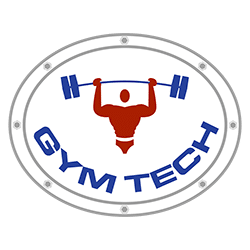Opening a Commercial Gym?
Opening a commercial gym is an ambitious endeavor that can be both rewarding and profitable. However, meticulous planning and attention to detail are critical. The success of a gym hinges on the ability to meet members’ needs while providing a safe and invigorating environment. This comprehensive guide is designed to provide knowledge and insights essential for thriving in the competitive fitness industry.
Choosing the Right Equipment
Assess the Needs of the Target Market
Equipment choices should reflect the preferences and goals of the target audience. Whether catering to hardcore bodybuilders, busy professionals seeking quick workouts, or athletes, conducting market research, surveying potential customers, and examining competitors are crucial steps.
Diverse Range of Equipment
Variety is key in a fitness environment. Providing a wide selection of equipment, including treadmills, ellipticals, free weights, and resistance machines is essential. Additionally, including functional training gear like battle ropes, TRX bands, kettlebells, and medicine balls, can enhance the facility’s appeal.
Quality and Durability
Quality is an indicator of a brand’s commitment to excellence. High-quality equipment not only lasts longer but also ensures the safety and satisfaction of members. Opting for cheaper equipment may lead to higher repair costs and member dissatisfaction in the long run.
Specialized Equipment
Unique offerings can set a gym apart from competitors. Considering niche equipment like climbing walls, Pilates reformers, or rowing machines can be beneficial. Differentiating a gym can often become a major talking point and draw for new members.
Equipment Layout and Accessibility
An intuitive equipment layout is vital. Placing similar equipment together and ensuring that popular machines have multiple units to prevent wait times improves the member experience. Adequate space between machines for members to move freely is also important.
Continuous Updates
Staying current with fitness trends and continuously updating equipment inventory is essential in the ever-evolving fitness industry.
For an in-depth guide, refer to the article “How to Choose the Right Equipment for Your Gym”.
Designing the Gym Layout
Optimize Space
Space optimization is critical for creating an efficient and pleasant environment. Ensuring there’s adequate space between machines for members to move freely is key.
Zoning
Zoning is about creating distinct areas for different types of activities such as cardio, strength training, functional training, and stretching. Each zone should have an atmosphere suited to the activities taking place.
User Comfort and Flow
User comfort is essential. The layout should include private areas for those who prefer seclusion, and open spaces for classes and social interaction.
Aesthetic and Functional Design Elements
Design elements, including color schemes, flooring types, and lighting, should reflect the brand identity and motivate and energize members.
Accessibility
Ensuring accessibility for all, including individuals with disabilities, is not only ethically right but often a legal requirement.
For detailed insights into gym layout design, refer to the article “Designing Your Gym Layout for Optimal Performance”.
Implementing Maintenance and Safety Protocols
Regular Equipment Maintenance
Implementing a maintenance schedule that includes daily, weekly, and monthly tasks is critical in reducing long-term costs and ensuring the longevity of the equipment.
Safety Measures
Safety is paramount in any fitness facility. Members should be given a safety induction and have access to safety equipment such as clips for weight bars.
Staff Training
Staff should be trained in all aspects of gym safety, including first aid. They should be vigilant and effective in ensuring member safety.
Insurance
Obtaining adequate insurance is vital for protecting the business. At a minimum, liability and property damage coverage should be secured.
Conclusion
Launching a commercial gym is a substantial undertaking, but with diligent planning, it can be the foundation of a successful business. A gym is more than just a room with equipment; it is a community for those seeking self-improvement. Focusing on quality, safety, and member experience is crucial in building a loyal customer base. Use this checklist as a roadmap to navigate the challenges and opportunities in the fitness industry. Through dedication and effort, an exceptional fitness facility can be established that is a valued asset to the community.
